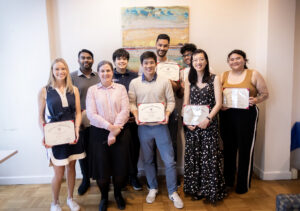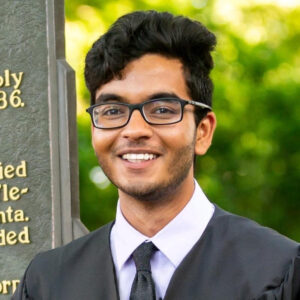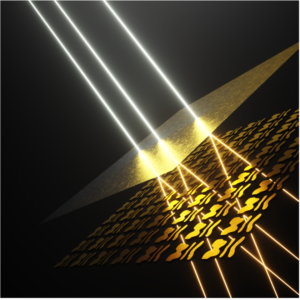
Ten winners of the 2023 Penn Prize for Excellence in Teaching by Graduate Students were announced at a ceremony held April 13 at the Graduate Student Center. The recipients, who represented five of Penn’s 12 schools, were recognized among a pool of 44 Ph.D. candidates and master’s students nominated primarily by undergraduates—a quality unique to and cherished about this Prize.
“It’s a particularly authentic expression of gratitude from undergraduates, and that’s really the pleasure [of presenting these awards],” says Vice Provost for Education Karen Detlefsen, who was present to announce the winners and award them with a certificate. (They also receive a monetary award.) “I’m so proud of our students: Our undergraduates, for taking the time to recognize what it is our graduate students contribute to the student body, and the graduate students who are contributing to the life of the University.
“Students are the lifeblood of the University and without them, we wouldn’t be here.”
The Prize began in the 1999-2000 academic year under former Penn President Judith Rodin. It was spearheaded by then-doctoral-candidate Eric Eisenstein and has been issued every year since. Nominations for the Prize often mention how graduate teaching assistants were able to take a complex subject and make it relatable or craft a course like philosophy or mathematics into an enjoyable—even highly anticipated—experience for students.
“Many nominations show how much students value a TA or a graduate instructor of record who shows that they care for their learning and for them as people, and who makes themself readily available to assist,” says Ian Petrie, director of graduate student programming for the Center for Teaching and Learning, who organizes the selection committee for the Prize. “Typically, however, committee members are also interested in seeing nominations that really point to how a graduate student instructor taught or gave feedback—not just how responsive they were to emails or how many office hours they had.”
He also emphasizes that many winners this year were not just teachers, but mentors—often helping undergraduates or new graduate students navigate not only the course but also Penn as an institution.

One of the winners, Puneeth Guruprasad, hails from Penn Bioengineering. Guruprasad is a fourth-year Ph.D. student in Bioengineering who conducts research in the lab of Marco Ruella, Assistant Professor of Medicine in the Division of Hematology/Oncology in the Perelman School of Medicine. Ruella is also a member of the Center for Cellular Immunotherapies (CCI) and the Penn Bioengineering Graduate Group.
Guruprasad studies mechanisms of resistance to chimeric antigen receptor (CAR) T cell therapy for cancer. He has served as a teaching assistant for five semesters: three for Intro to Biotransport Processes (BE 3500) taught by Alex Hughes, Assistant Professor in Bioengineering, and two for Cellular Engineering (BE 3060), taught by Daniel Hammer, Alfred G. and Meta A. Ennis Professor in Bioengineering and in Chemical and Biomolecular Engineering. Both courses are a part of the core curriculum for undergraduate bioengineering students. His doctoral thesis focuses on how a specific interaction between CAR T cells and tumor cells limits their function across a range of cancers.
“I make myself approachable outside the classroom, and I think that’s one aspect of being a TA: having responsibilities that extend beyond the classroom,” says Guruprasad. “Dozens of times, I’ve spoken to students over coffee, or over some lunch, about what direction they want to take in their life, what they want to do outside of the course, and give them my two cents of advice. I try to individualize.”
This post was adapted from an original story by in Penn Today. Read the full story and list of 2023 winners here.









